Monday, July 11, 2016
After lunch, we walked along the Seine towards
Île de la Cité/City Island.
 |
Crossing the pedestrian Pont des Arts, we had a view of
the entire river side of Le Louvre, extending down past
the Pont/Bridge du Carrousel that can be seen (KSS) |
 |
Turning to look upriver, we can see Pont Neuf/New Bridge (1578-1607),
which despite its name, is the oldest bridge in Paris, stretching
from one bank, over the Île de la Cité to the other bank |
 |
The tip of Île de la Cité is called Square du Galant Vert/Small Garden
of the Green Gallant/Knight, a popular spot for lovers (KSS) |
 |
| A bookseller in white, on the Left Bank |
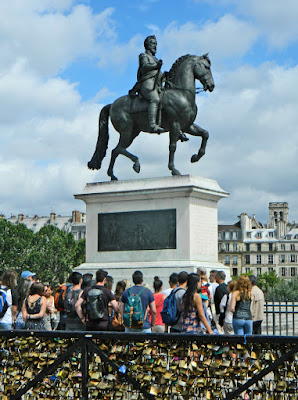 |
Statue of Henry IV (1818 copy of 1618 statue) by
Giambologna, note the lovers' locks on the railing |
Henry IV was known as the
Gallant Vert/Green Gallant or Knight because he was a ladies' man.
 |
| Place Dauphine on Île de la Cité (KSS) |
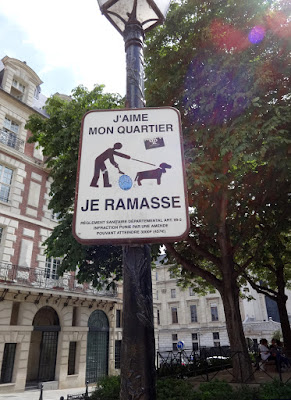 |
| "I love my neighborhood: I pick up" (KSS) |
 |
| Place Dauphine |
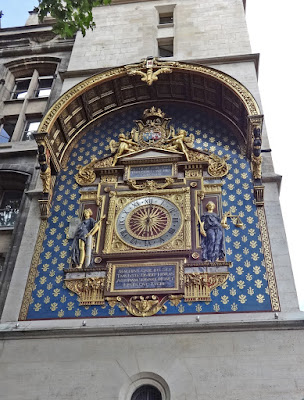 |
Palais de Justice/Courthouse clock (1334),
the oldest clock in Paris; the joke is that
even though it is Baroque, it is still ticking... |
Stopped at the
Conciergerie/Prison in the courthouse complex, where the
concierge was the warden.
 |
Started in the La Salle des Gens d'Armes/
Hall of the Men-at-Arms, which was initially
the dining room for the 2,000 staff of the former
Palais de la Cité/City Palace (KSS) |
 |
| Spiral staircase (KSS) |
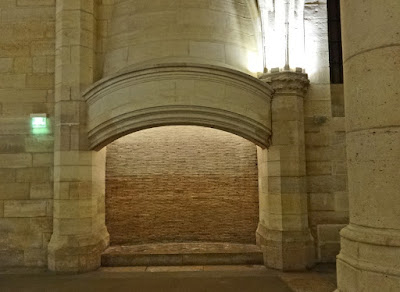 |
| The hall has four of these large fireplaces (KSS) |
 |
| We were supposed to look up the chimneys... (KSS) |
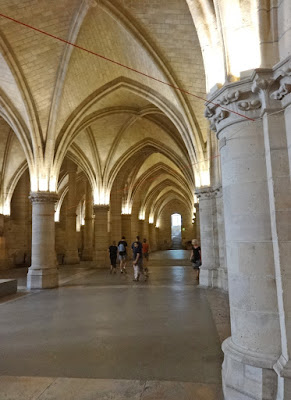 |
There were red strings crossing
several of the vaults (KSS) |
 |
| The red strings were used to hang displays (KSS) |
 |
| A hall of prison cells |
 |
| A reproduction of Marie Antoinette's cell (KSS) |
 |
| A few of Marie Antoinette's belongings (KSS) |
The Conciergerie was called the anteroom of the guillotine, as this was where prisoners were kept until their appointment with the blade.
 |
| Upstairs was a list of 2780 people who condemned to die (KSS) |
 |
A closer look shows that not only nobility and clergy
were targeted, but anyone suspected of counter-
revolutionary activity, thus most were commoners (KSS) |
It is not at all clear how many people died by guillotine during the French Revolution/Reign of Terror in what is now called Place de la Concorde. And the total number of people who died throughout all of France was in the tens of thousands.
 |
| Commoner's cell (KSS) |
 |
| Cell of someone with some money (KSS) |
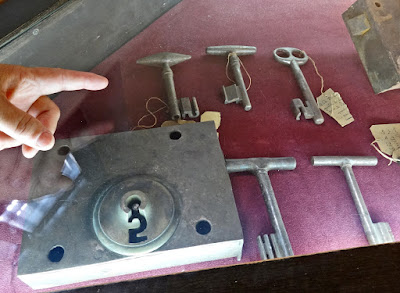 |
| Large locks and keys (KSS) |
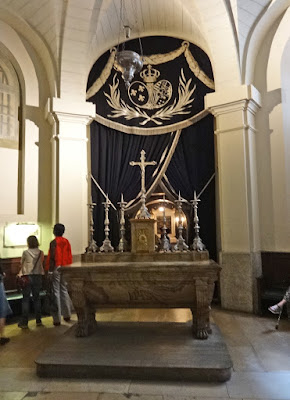 |
A chapel was built on the site of
Marie-Antoinette's prison cell (KSS) |
 |
| Silver tears with Marie-Antoinette's monogram (KSS) |
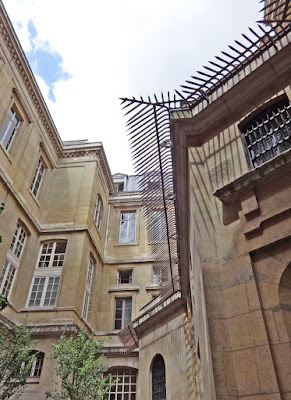 |
| Courtyard for women prisoners (KSS) |
On the other side of the Palais de Justice complex was
Sainte-Chapelle/Holy Chapel (1242-1248) that was built to house holy relics, especially the Crown of Thorns (which is now in the Treasury of Notre Dame).
 |
Sainte-Chapelle with a crown of thorns
sitting halfway down the spire to the right;
the angel on the front peak used to revolve (KSS) |
 |
| The lower chapel was for the commoners (KSS) |
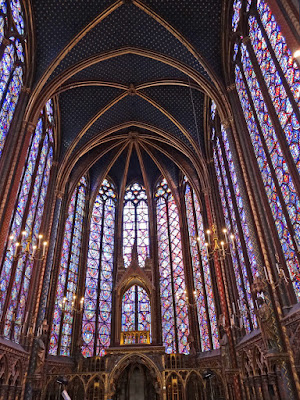 |
The upper chapel is known for its stained glass,
two-thirds of which is original (KSS) |
The apse windows represent the New Testament depicting the life of Christ, the Passion, and the life of St John the Baptist.
 |
| In the square on the right, Christ receives the Crown of Thorns |
The windows on the sides of the chapel depict stories from the Old Testament, starting on the left side with Genesis, then Exodus, Leviticus and Numbers, Deuteronomy and Joshua, Judges, and Isaiah. On the right are Ezekiel, Jeremiah ad Tobit, Judith and Job, Esther, the Book of Kings, and the last is the Story of the Relics.
 |
Genesis with God creating the world in the lower circles,
Adam and Eve in the middle circles,
and Cain and Abel in the upper circles |
 |
| Floor of the chapel (KSS) |
 |
The upper altar was for displaying
he Crown of Thorns (KSS) |
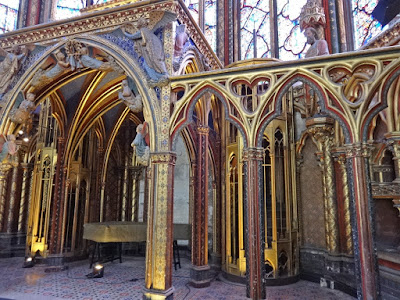 |
| Space for the main altar, and spiral stairway to the upper altar (KSS) |
 |
| The Story of the Relic panels (KSS) |
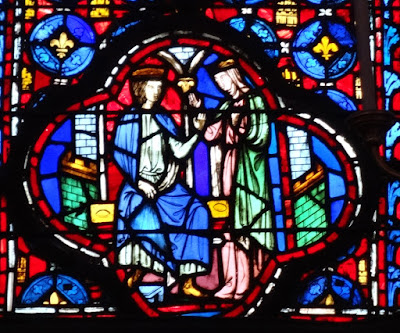 |
Constantine waves goodbye to his mother, Helen,
as she embarks on the journey to retrieve relics from the Holy Land |
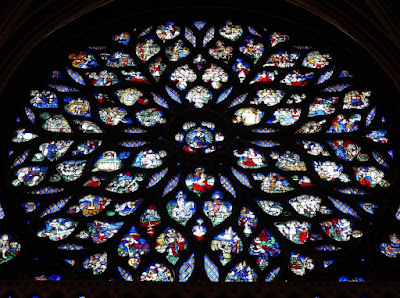 |
| The rose window depicts Judgment Day |
After visiting Sainte-Chapelle, we crossed to the Left Bank and went into the Latin Quarter.
 |
Fontaine St-Michel/The Fountain of St Michael
(1858-1860) designed by Gabriel Davioud,
was meant to cover the wall of the end building |
Next: Hôtel de Cluny.






































No comments:
Post a Comment